Flaky, flavorful and super easy to make with just five ingredients; Triangle Parathas are great to serve with curries and sabjis.
The process is quite easy and these whole wheat layered flatbreads are super easy to put together.
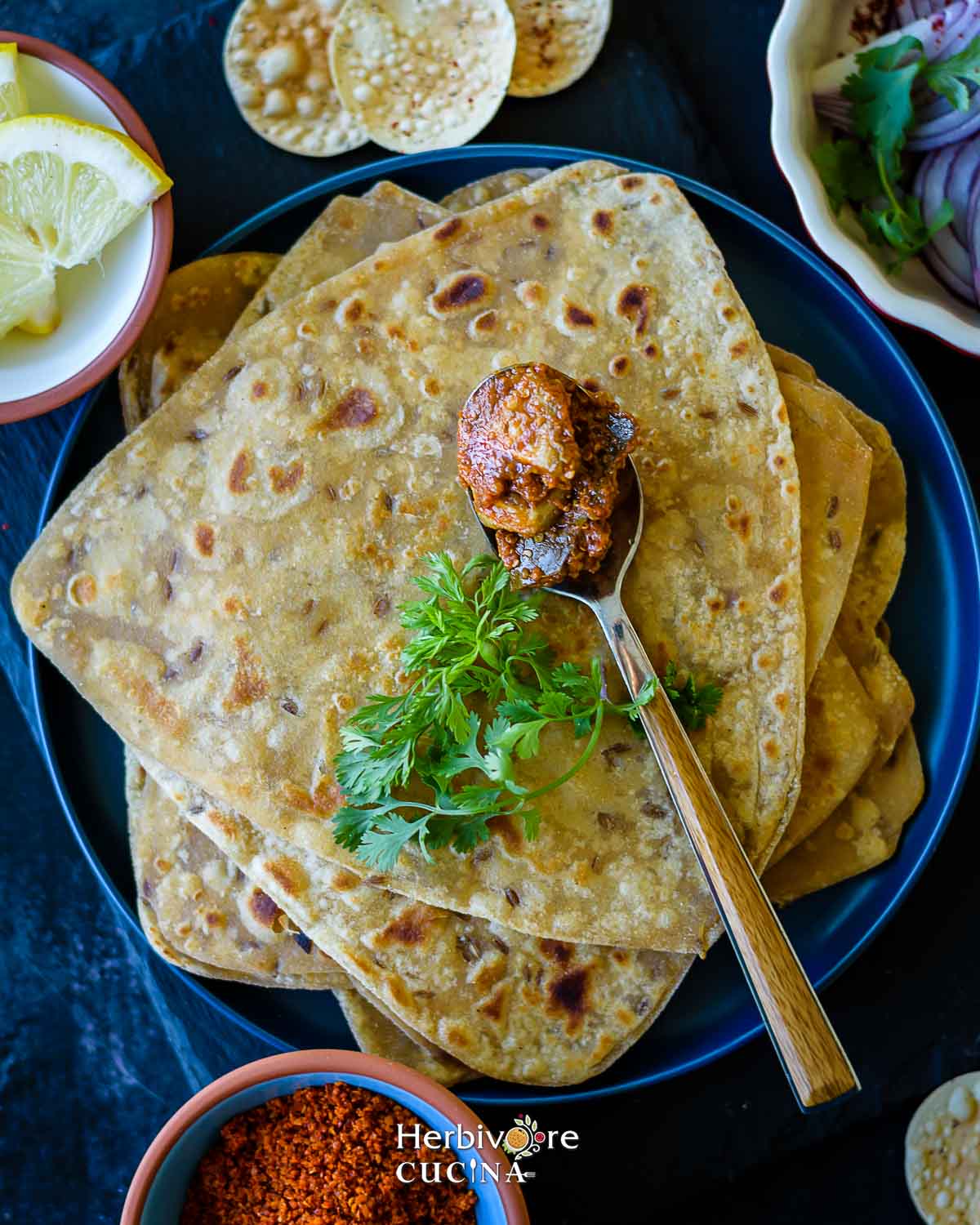
Flatbreads form an important part of any Indian meal. Served with sabjis, dals, rice, salad and pickles, it completes a meal.
Plus, it is popular for snacks, breakfast or something to carry on trips and picnics. Paratha of various kinds, thepla, millet rotis and whole wheat roti are popular in a lot of households.
These are best to enjoy with sides like potato edamame curry, baingan bharta, beetroot kofta curry and mix vegetable sabji.
Jump to:
What is Paratha
Paratha is an unleavened flatbread from the Indian cuisine. Whole wheat flour makes the best parathas. We make the dough with add-ins of choice, roll them into layers and cook them on a hot griddle till golden brown and crisp.
Parathas are great as a flatbread to serve for a meal. Moreover, they work for breakfast or even a snack with some masala chai, chutney or pickle.
Plain parathas need just flour and salt. However, they can be made even more delicious by adding some cumin seeds, carom seeds or kasoori methi to the dough. Another popular version is the namak mirch ke parathe; which are made with salt and red chili powder in the dough.
Paratha vs Naan vs Roti
Paratha is a flaky unleavened bread generally made with whole wheat flour. It has layers thanks to the fat between the dough ball layers.
Roti in turn is a flatbread that is thin, made in a single layer and super soft. It is not flaky and requires only flour and water to come together.
Naan is the only leavened flatbread of the three. We use yeast or baking soda for it to rise. We make it with all purpose flour. And we cook it in the tandoor or an oven. This is far thicker than paratha and roti.
Why this recipe works
- It is a wholesome flatbread made with whole wheat flour.
- We only need flour, oil and water to make the recipe. All the other ingredients are optional.
- These are greta for a meal and double up as a delicious snack too.
- Roll them thin or thick based on how crisp you want them.
- These are great with sabji, dal or with masala chai.
- The recipe is easy to make Vegan by one simple swap.
- These are great as a make ahead recipe. The dough as well as triangle parathas are great to make ahead of time.
- A great idea to make the dough as part of meal prep and use it over the next couple of days to make parathas.
- Moreover, the same dough works to make stuffed parathas too.
Ingredients and Substitutions

- Wheat Flour: The flour we use to make parathas is whole wheat flour. However, multigrain flour works too. Buy yours from the Indian store or from Amazon. We make the dough using this and also some dry flour to roll the parathas. Sujata Chakki Atta, Aashirvaad Select Whole Wheat Sharbati Atta or Sujata Multi Grain Atta works well.
- Oil: I like to use oil to make the paratha dough and to roll the parathas. While ghee works too, I like to use oil.
- Ghee: Ghee is perfect to cook the parathas. However, we can use oil too. But ghee does give a great flavor.
- Water: We need some water to bring the paratha dough together. Room temperature or warm water will work well.
- Cumin Seeds: I like to add some cumin seeds in the dough. We can also add in carom seeds, kasoori methi or other seeds. Or simply skip them all.
- Salt: While salt is optional, I like to add salt to the dough. The parathas taste great with a pinch of salt in them.
See the recipe card for detailed ingredient information, measurements and nutrition.
How to make this recipe
1- In the base of the kitchen aid add flour, cumin seeds, salt and oil.
2- Add in water.
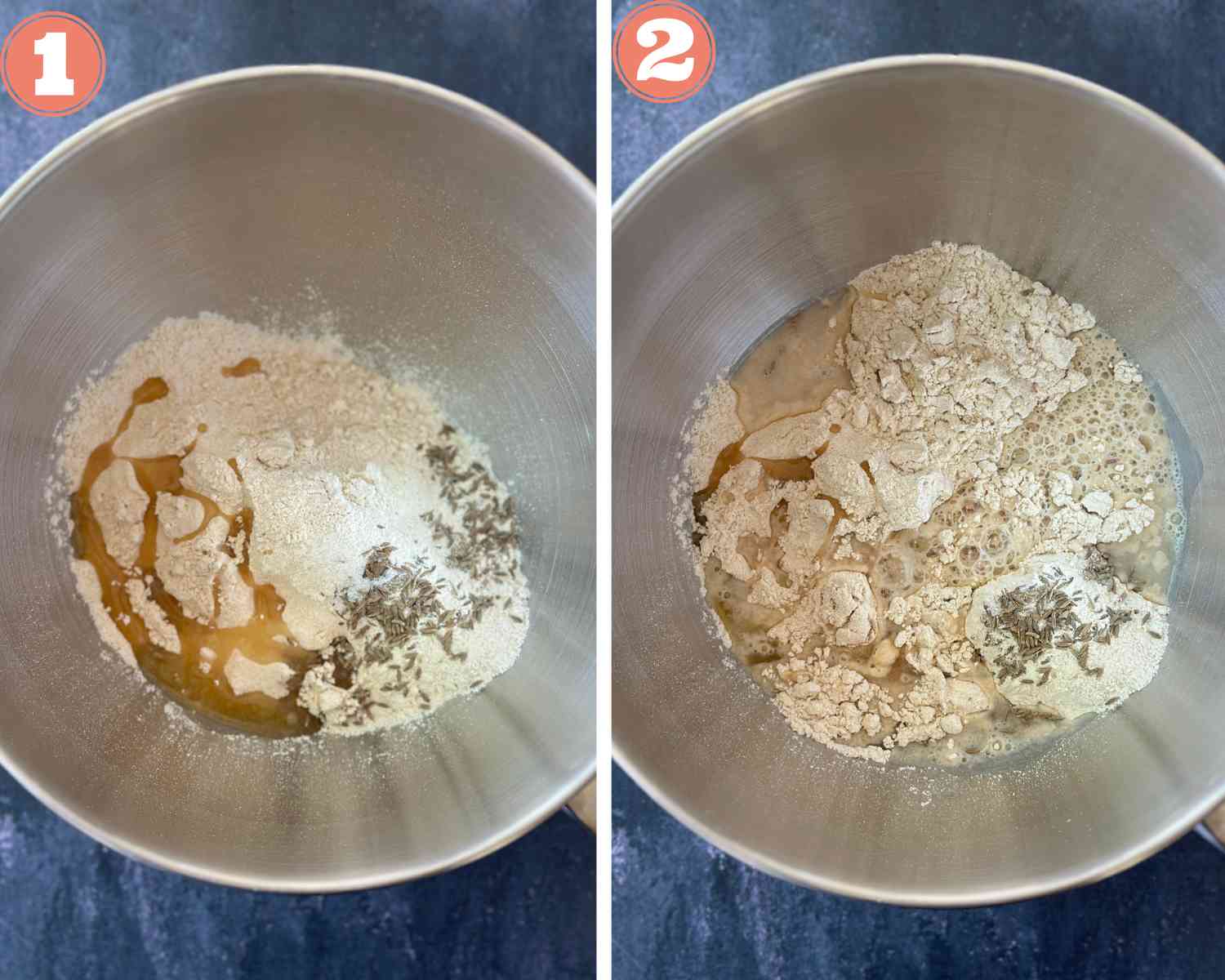
3- Place the kitchen aid bowl in the base and start bringing the dough together using a dough hook.
4- Add more water if required and make a soft dough.
Pro Tip: My ideal ratio of flour to water is about 2:1.

5- Place the dough ball in a bowl and rest covered for 20-30 minutes.
6- Once the time is up, divide the dough into 7-8 equal parts.
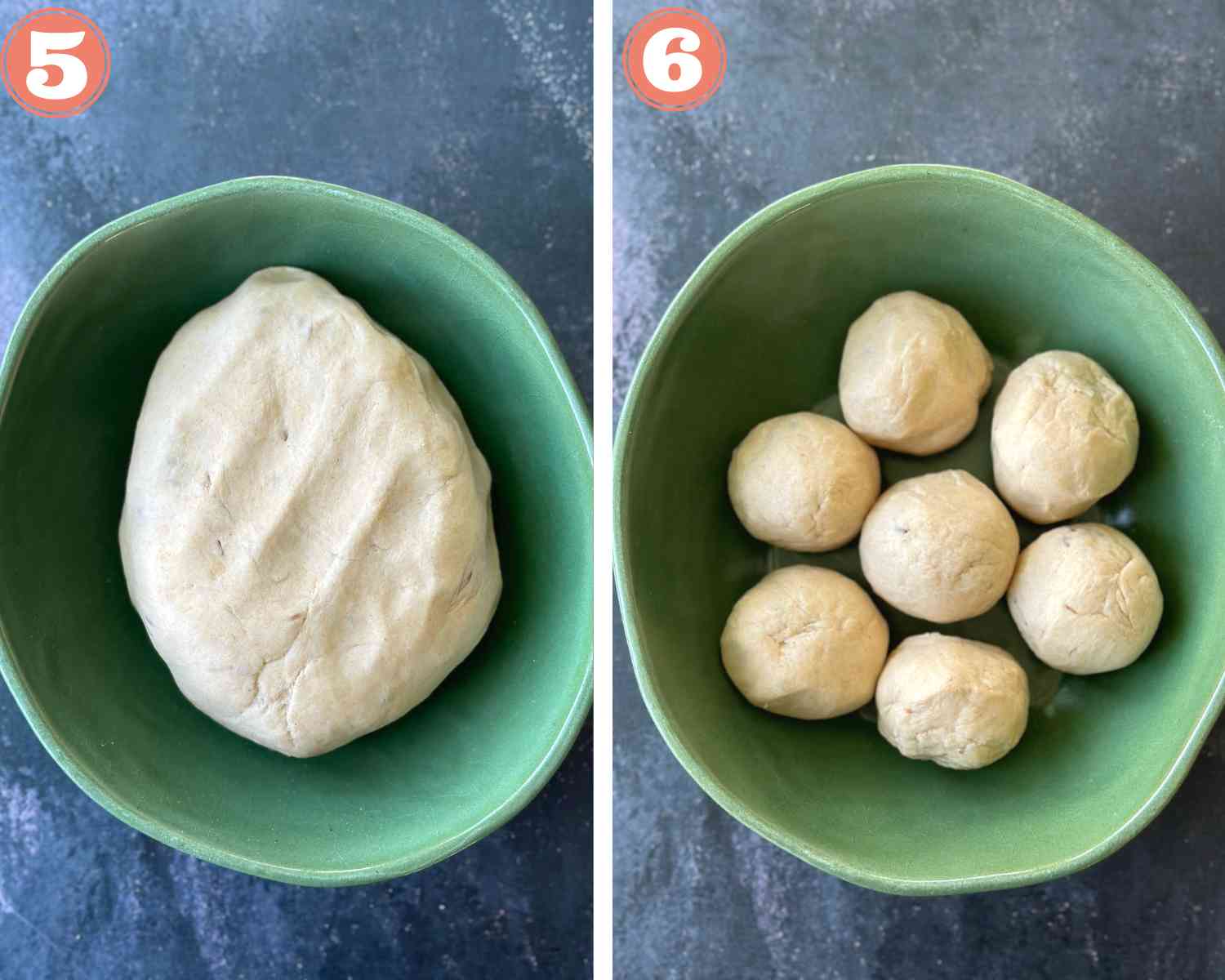
7- Place one dough ball on a rolling board.
8- Then press it down and roll the dough ball in some dry flour.
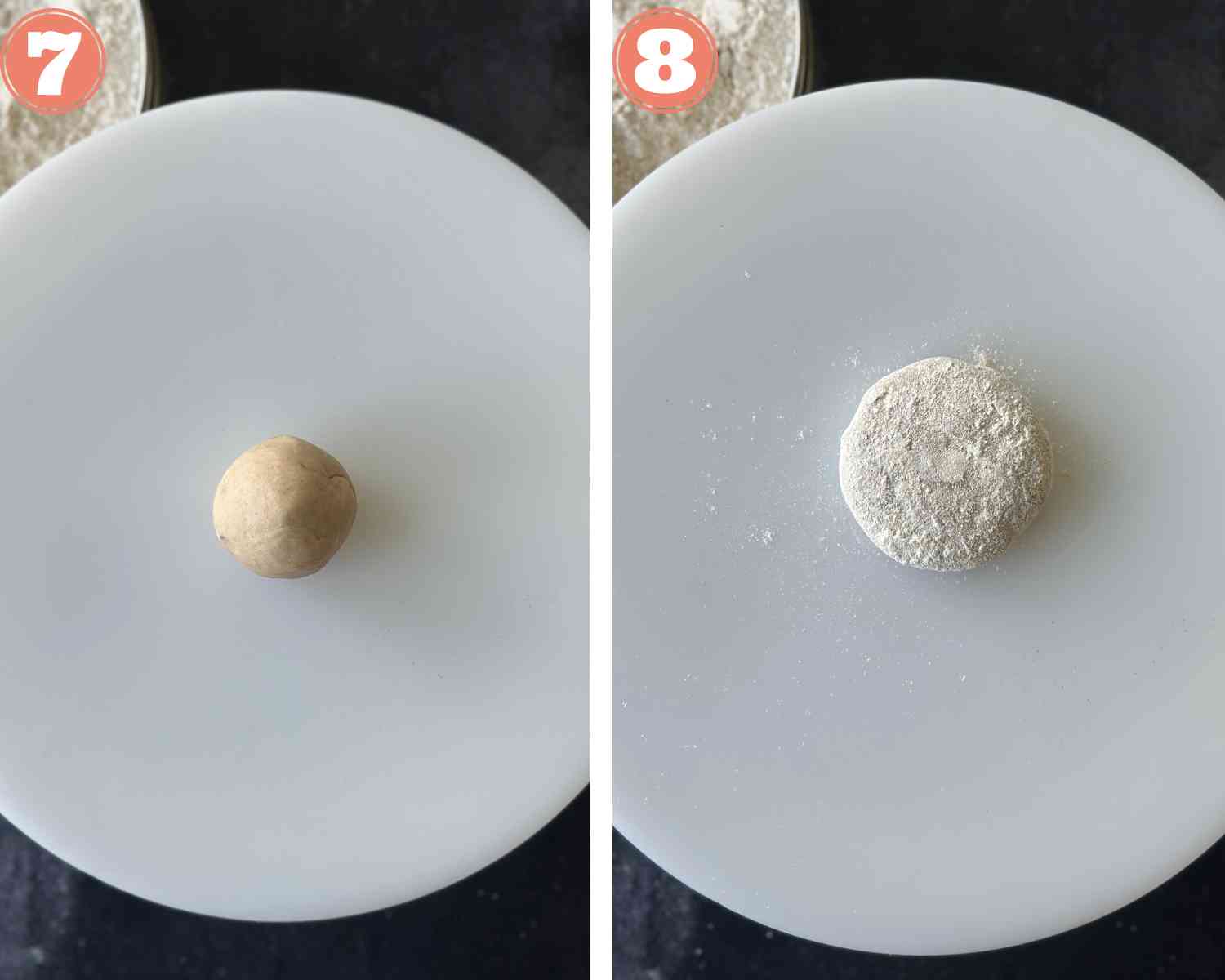
9- Roll to make a 3-4 inch round.
10- Apply some oil on half the round.
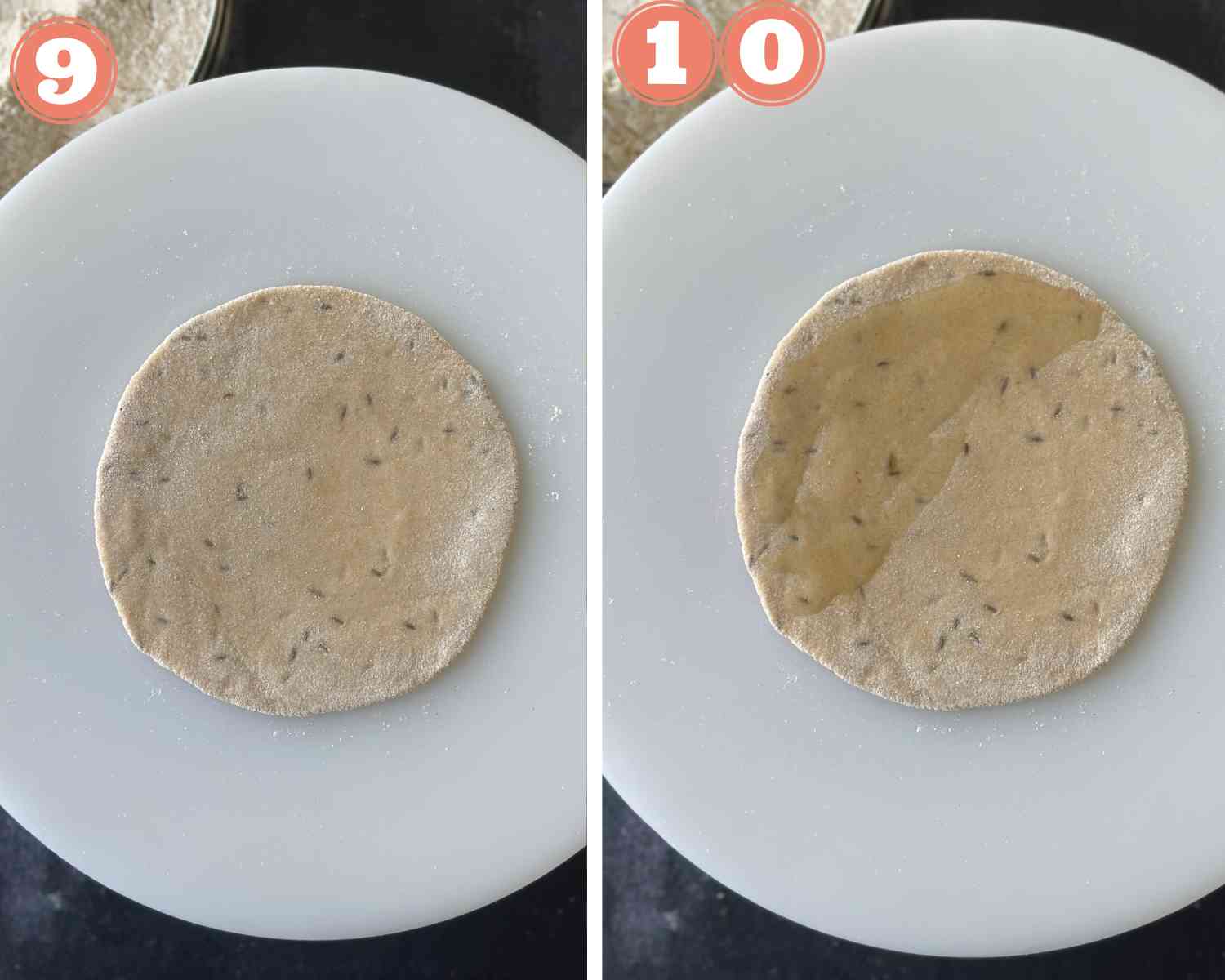
11- Then fold over the dough round into half.
12- Apply some oil on the quarter of the dough ball.
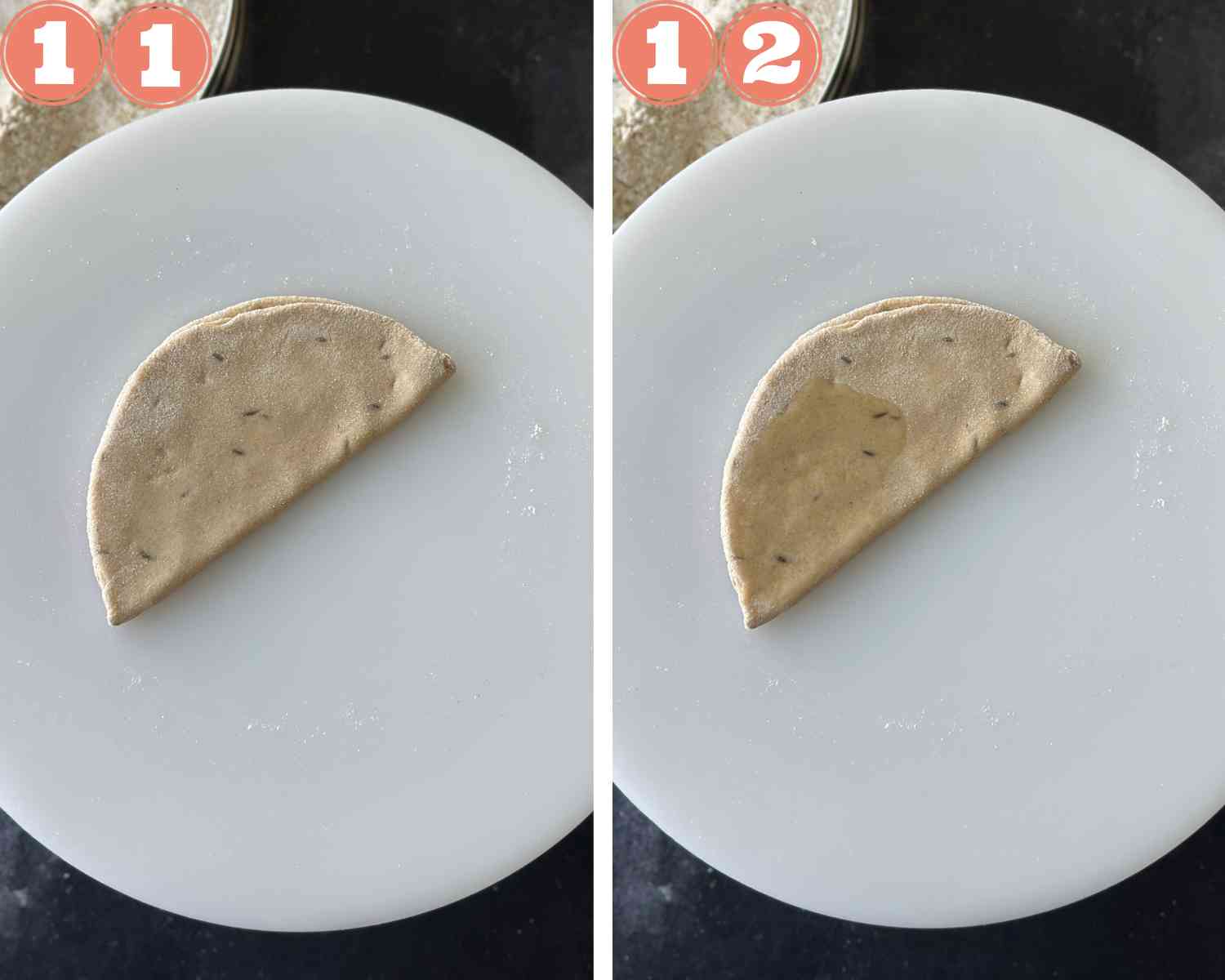
13- Fold over in half and roll again in dry flour.
14- Roll the dough ball into a triangle, turning it around to prevent sticking. Also, add some dry flour if needed.
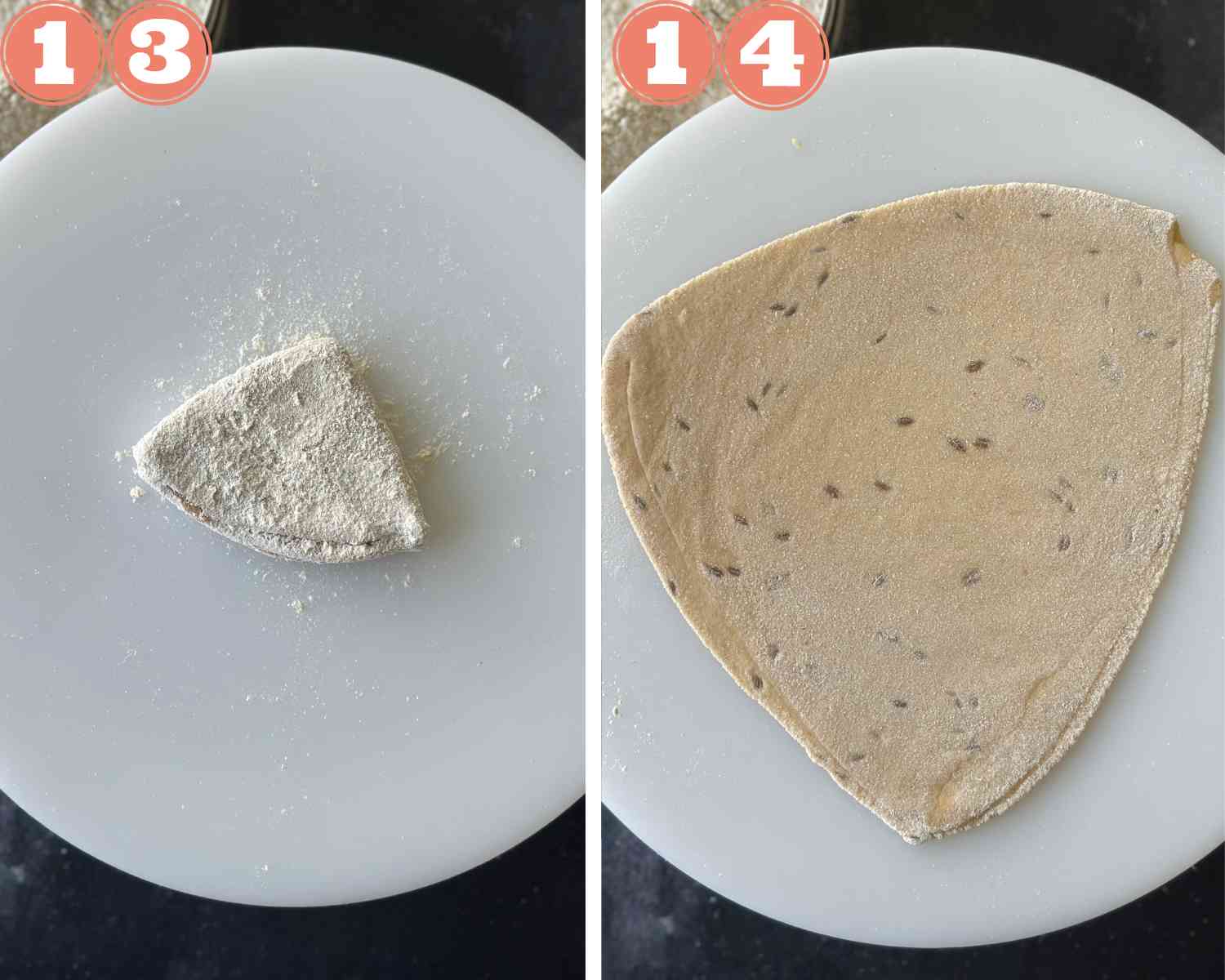
15- Heat a flat tava and place the paratha on the tava.
16- Once the bubbles start showing up, turn over.

17- Then apply some ghee and spread it evenly. Once this side has bubbles, turn over and apply ghee on the other side too.
18- Turn over and cook the paratha completely. Remove from flame and serve with a curry or sabji.
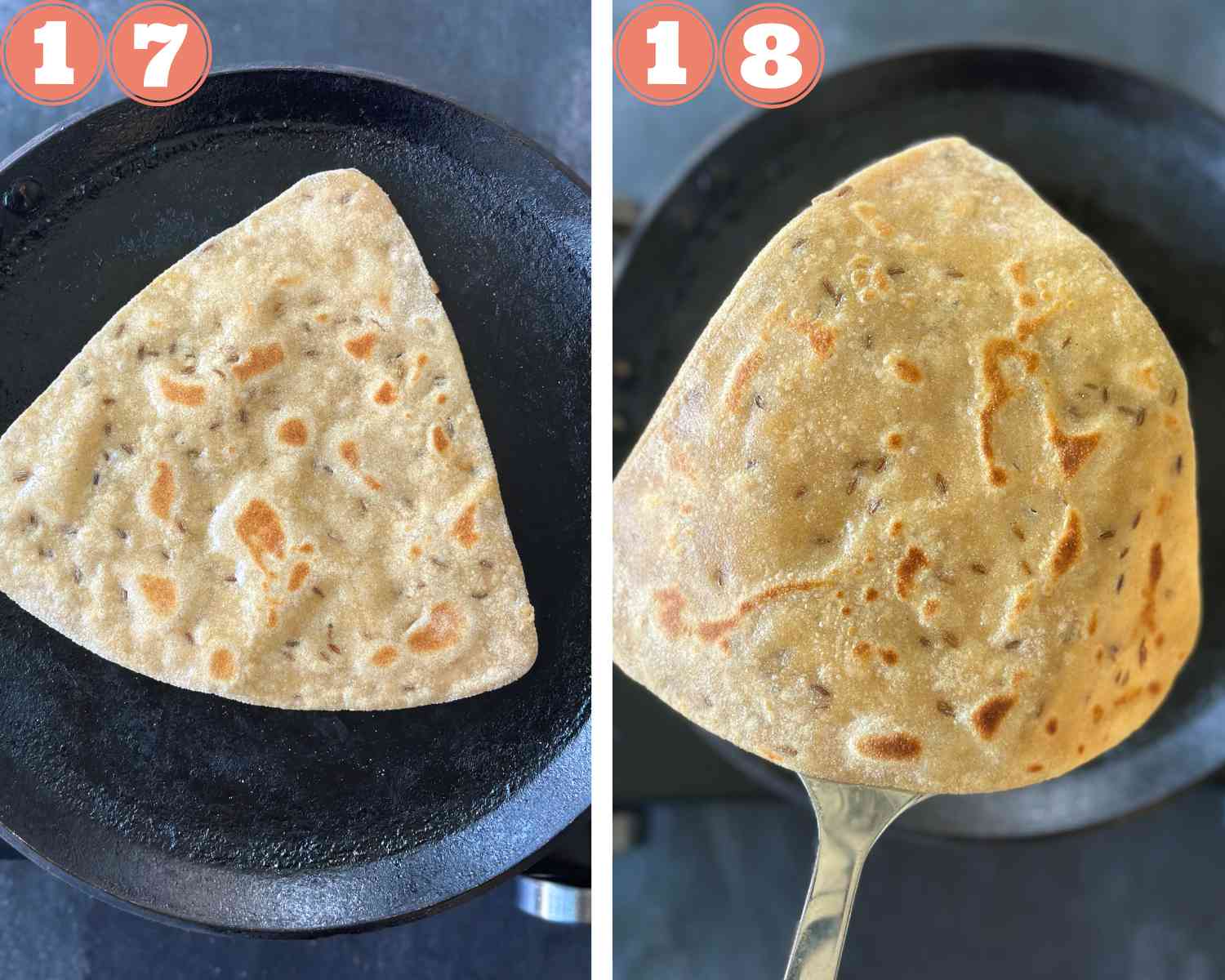
Expert Tips and Notes
- Making the dough: The dough for triangle parathas has to be just right. Not super hard and not super soft; the dough has to have a spring but not stick to the fingers when pushed down. The rough ratio of flour to water is 2:1 for best results.
- Using the stand mixer: The stand mixer works best to make the dough. It is great to multitask as they dough comes together while you prep something else. However, the dough can be made using the palms too.
- Resting the dough: Rest the dough for 20-30 minutes. It helps build gluten and make the dough soft and pliable. Cover them at all times so it does not dry out.
- Rolling the paratha: Roll the paratha with light hands. Take more dry flour as required. And while folding the dough ball; apply enough oil but not too much that it leaks out.
- Cooking the paratha: The parathas need to be cooked on medium flame. Only start cooking them only on a hot tava. Just flip it over twice. Flipping it too much will yield chewy parathas.
- Storing: Keep the parathas covered at all times. They tend to dry out if left open. Refrigerate or freeze to use later.
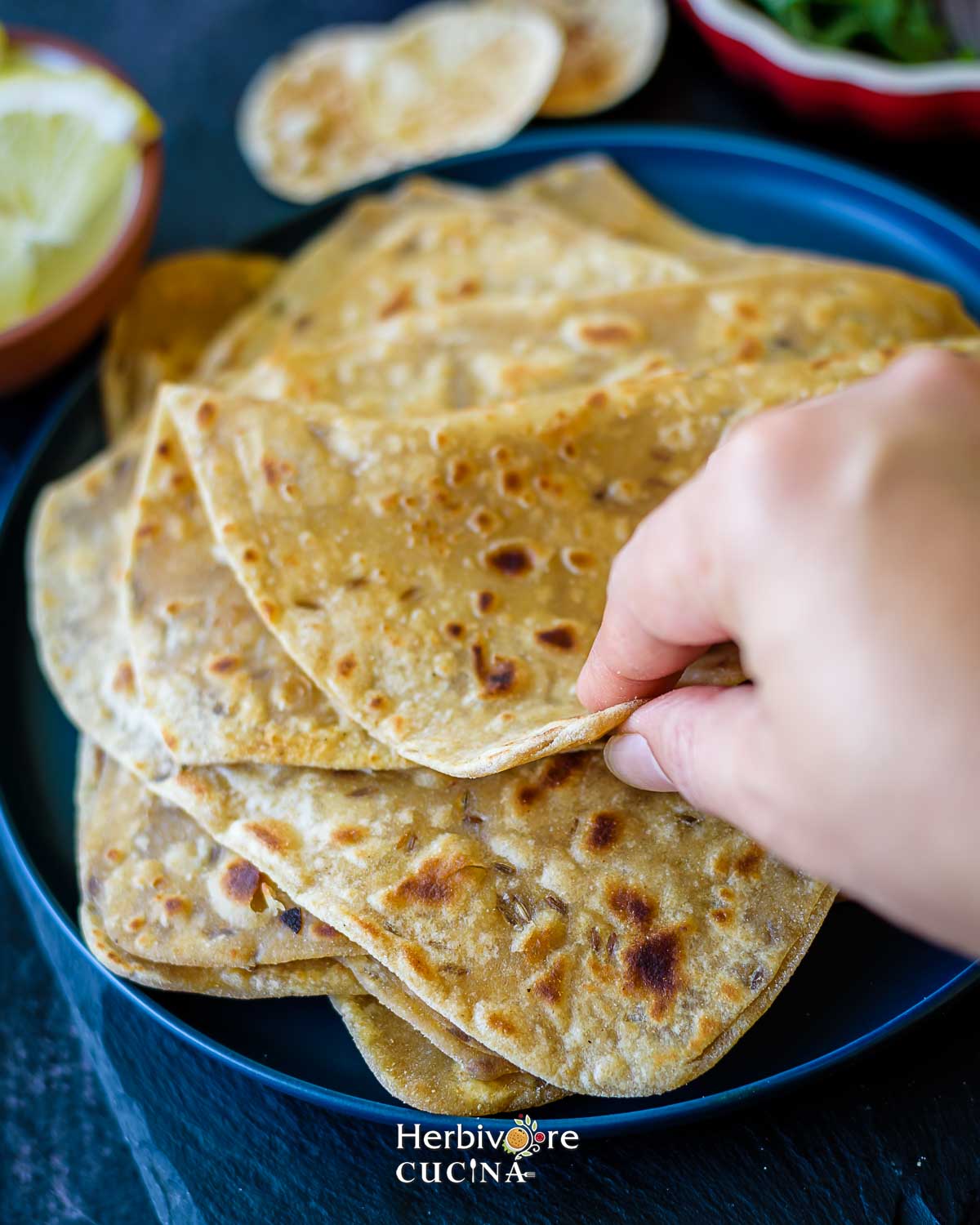
Storing
The dough is easy to make before hand. Simply pop it in an airtight container and refrigerate. It stays well for 2-3 days before turning dark.
The parathas can be rolled and frozen between parchment paper sheets. They can be cooked straight from the freezer without thawing them.
Moreover, the cooked parathas can be kept well too. Keep them covered lightly. Then transfer them to an airtight container once cool and keep at room temperature for 8-10 hours. To store overnight, refrigerate. To heat, transfer to a tava and heat through before serving.
Recipe FAQs
Yes certainly. Simply swap the ghee with oil or Vegan butter to make the parathas vegan.
The rough ratio of flour to water for parathas is 2:1. However, the amount of water required will vary based on flour brand and how old or new it is.
The paratha dough is made round and folded over into a triangle. Then, on carefully rolling it in the same shape helps us make triangle parathas. However, we can roll them round or square too.
Yes certainly. To store the prepared dough, simply transfer to an airtight container and refrigerate.Store it for up to 2-3 days.
Roti is a flatbread made by simply rolling the dough ball and cooked on tava followed by an open flame. Ghee may be smeared on it before serving. However, parathas are flatbreads that are rolled in layers and cooked smeared with ghee or oil. They tend to be flaky, layered and almost always have salt in them.
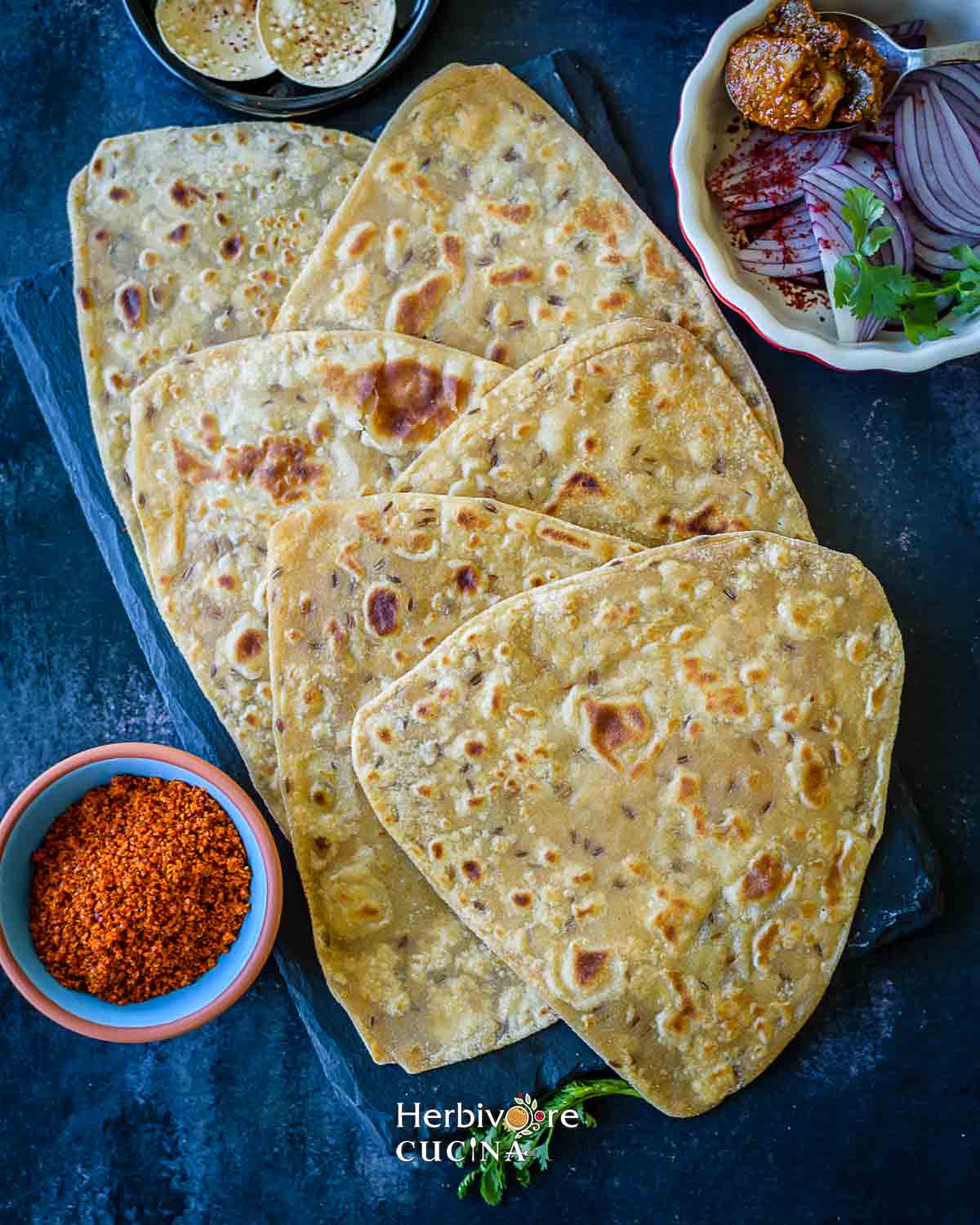
Pairings
We pair these triangle parathas with so many Indian curries. Here are some of the best pairings.
More Flatbread Recipes
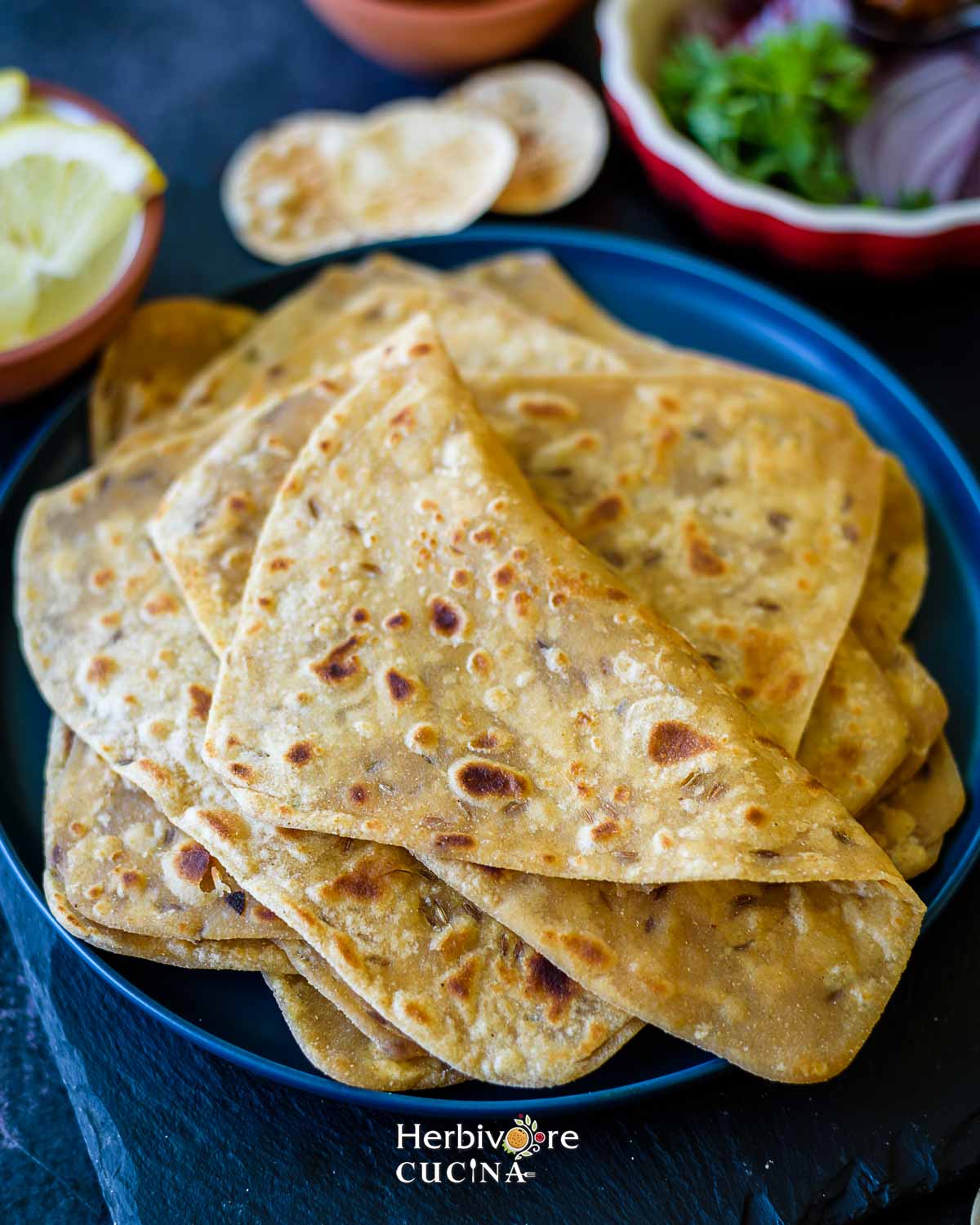
Love this recipe? Please leave a star rating in the recipe card below & if you REALLY like it, consider a review in the comments whilst you are there, thanks!
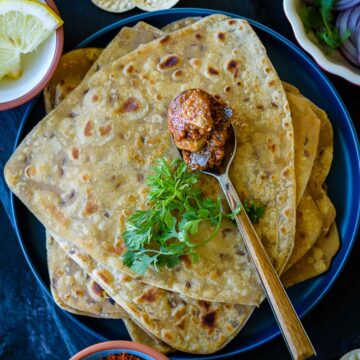
Whole Wheat Triangle Parathas
Ingredients
For the dough
- 2 cups whole wheat flour
- 1 cup water
- 2 teaspoon oil
- 1 teaspoon salt
- 1 teaspoon cumin seeds
For rolling
- ¼ cup whole wheat flour
- 2 teaspoon oil
For cooking the parathas
- 3 tablespoon ghee
Instructions
- In the base of the kitchen aid add flour, cumin seeds, salt and oil.2 cups whole wheat flour, 1 teaspoon salt, 1 teaspoon cumin seeds, 2 teaspoon oil
- Add in water.1 cup water
- Place the kitchen aid bowl in the base and start bringing the dough together using a dough hook.
- Add more water if required and make a soft dough. My ideal ratio of flour to water is always 2:1.
- Place the dough ball in a bowl and rest covered for 20-30 minutes.
- Once the time is up, divide the dough into 7-8 equal parts.
- Place one dough ball on a rolling board.
- Press it down and roll the dough ball in some dry flour.¼ cup whole wheat flour
- Roll to make a 3-4 inch round.
- Apply some oil on half the round.2 teaspoon oil
- Fold over the dough round into half.
- Apply some oil on the quarter of the dough ball.
- Fold over in half. Roll again in dry flour.
- Roll the dough ball into a triangle, turning it around to prevent sticking. Also, add some dry flour if needed.
- Heat a flat tava and place the paratha on the tava.
- Once the bubbles start showing up, turn over.
- Apply some ghee and spread it evenly.3 tablespoon ghee
- Turn over and apply ghee on that side too.
- Turn over and cook the paratha completely.
- Remove from flame and serve with a curry or sabji.
Video
Notes
-
- Making the dough: The dough for paratha has to be just right. Not super hard and not super soft; the dough has to have a spring but not stick to the fingers when pushed down. The rough ratio of flour to water is 2:1 for best results.
- Using the stand mixer: The stand mixer works best to make the dough. It is great to multitask as they dough comes together while you prep something else. However, the dough can be made using the palms too.
- Resting the dough: Rest the dough for 20-30 minutes. It helps build gluten and make the dough soft and pliable. Make sure it is covered all the time so it does not dry out.
- Rolling the paratha: Roll the paratha with light hands. Take more dry flour as required. And while folding the dough ball; apply enough oil but not too much that it leaks out.
- Cooking the paratha: The parathas need to be cooked on medium flame. Only start cooking them only on a hot tava. Just flip it over twice. Flipping it too much will yield chewy parathas.
- Storing: Keep the parathas covered at all times. They tend to dry out if left open. They can be refrigerated or frozen to use later.

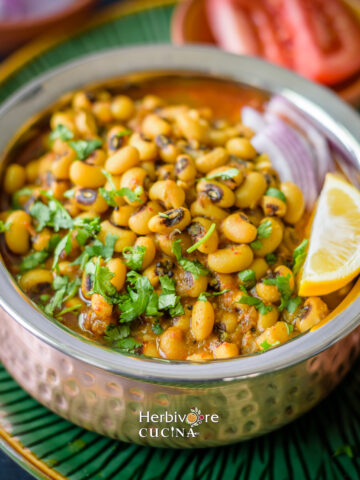
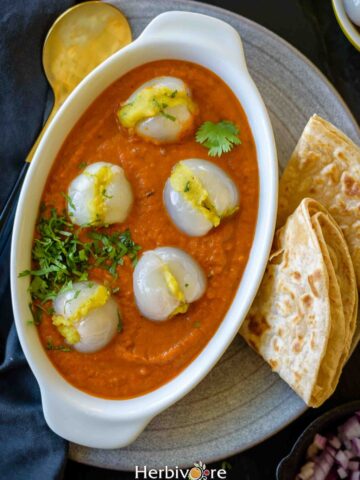
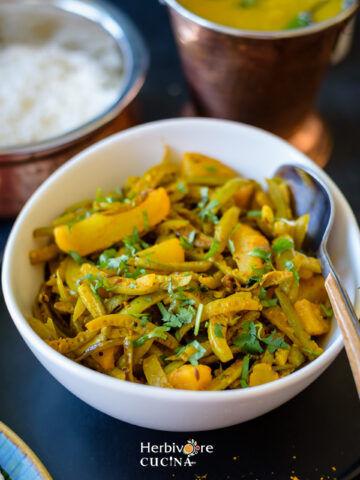
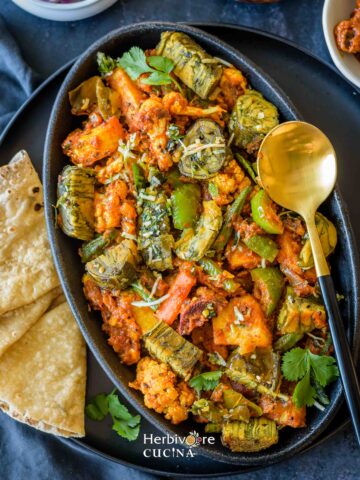
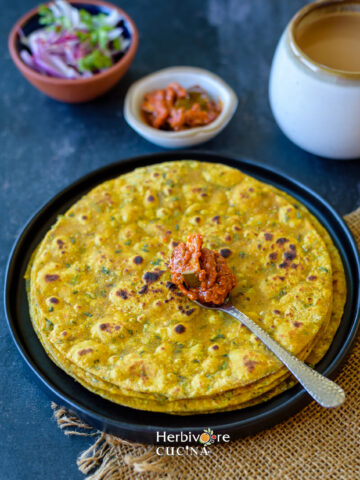
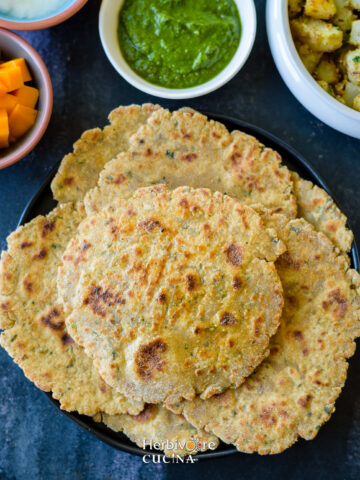
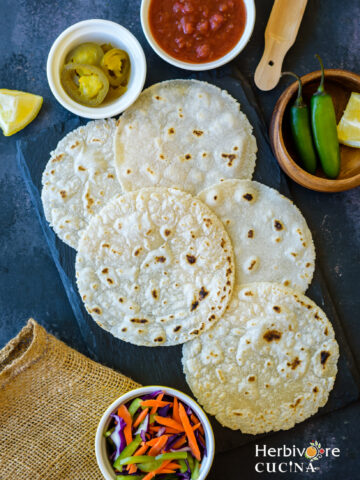
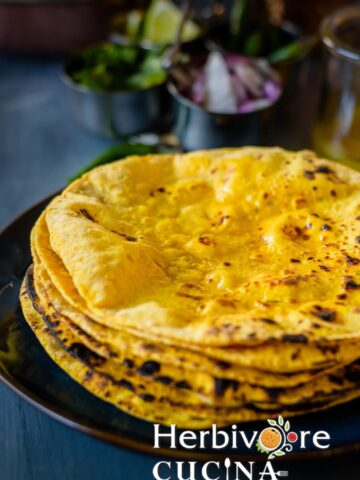
Leave a Reply